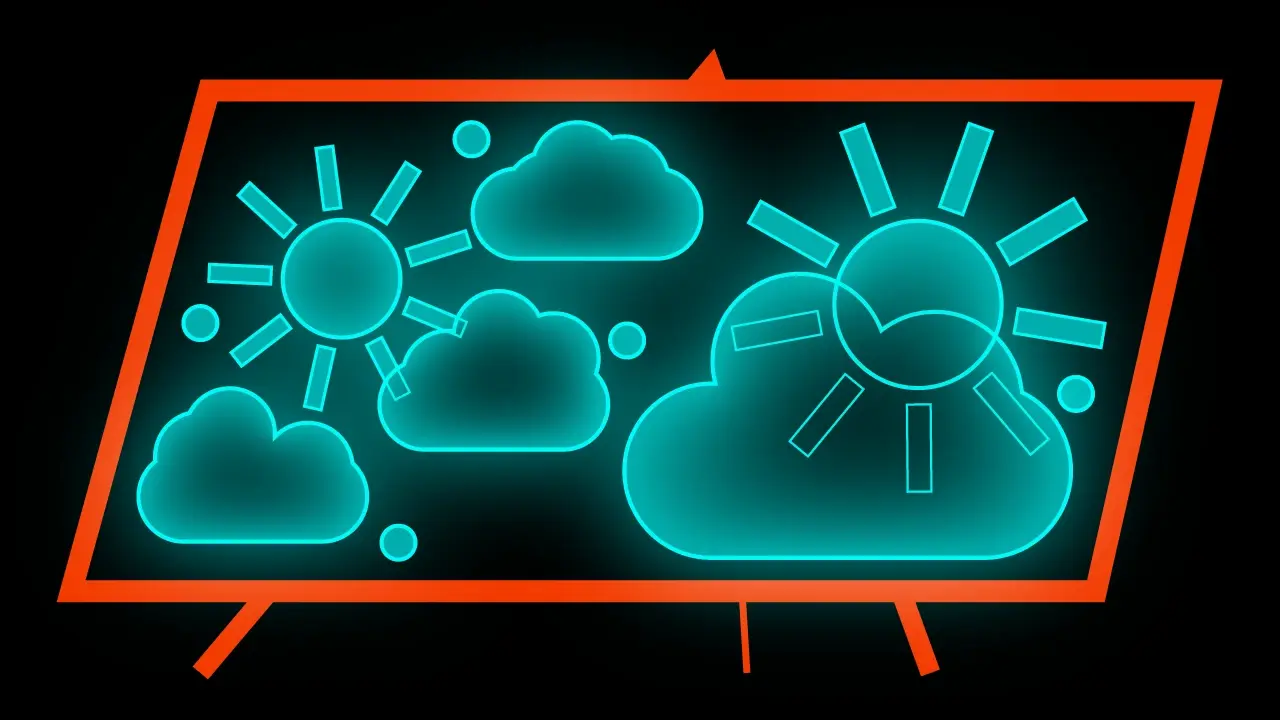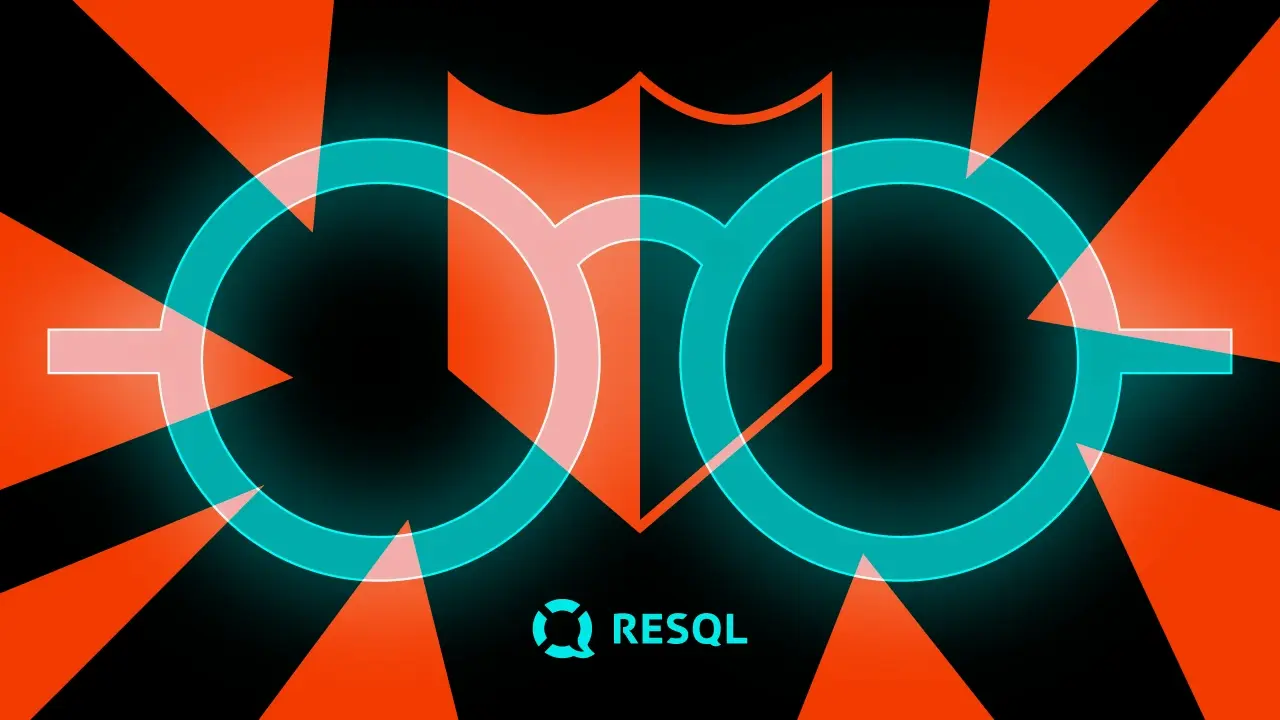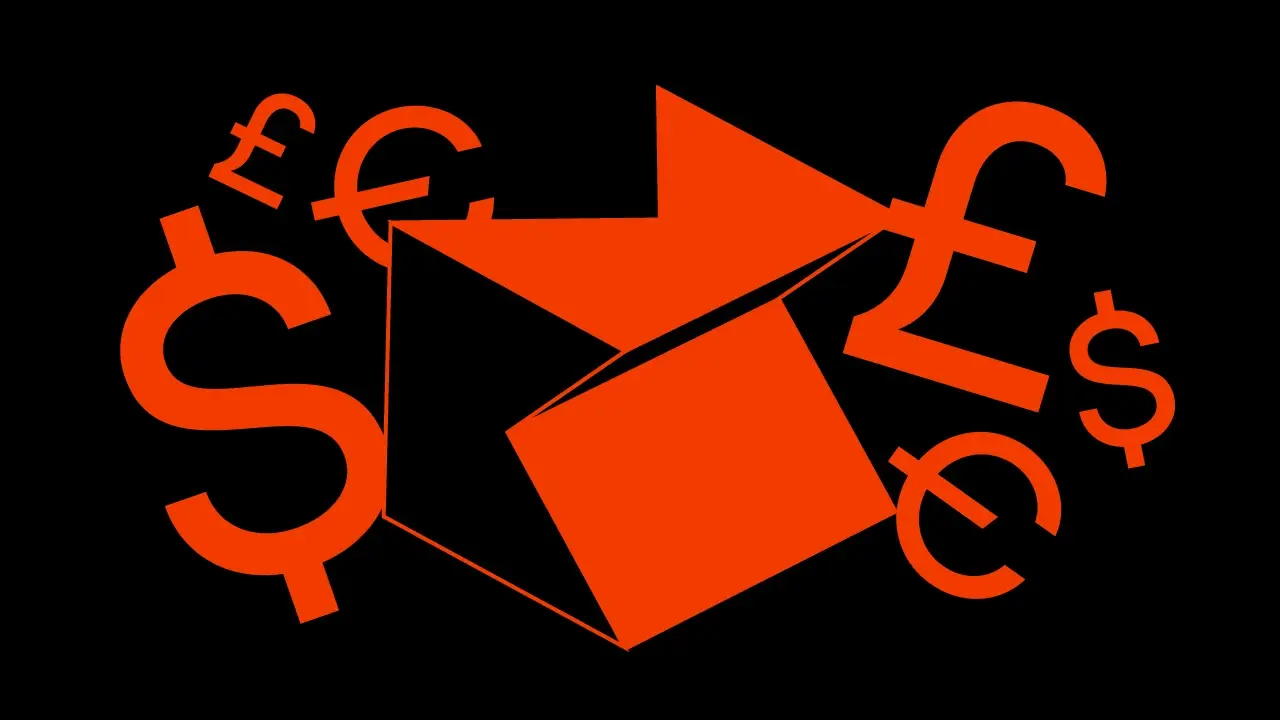Product Design Process: 5 steps, 4 failures, and 3 benefits

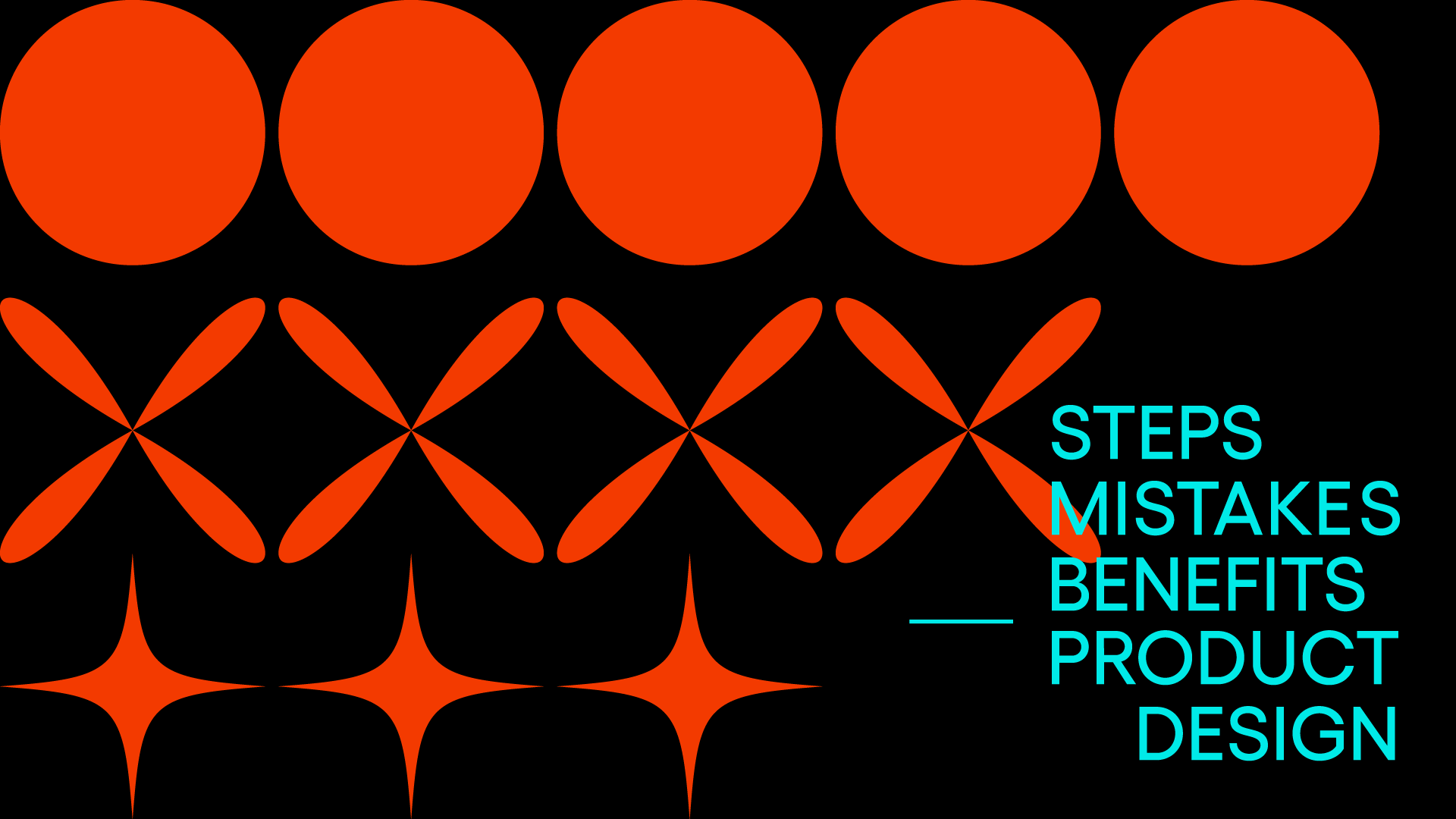
Thousands of IT, fintech, e-commerce or edtech companies around the world launch new digital products, web applications and services every day. What makes some of them become global hits and are loved by end users, while others are quickly forgotten, and no one wants to use them? The answer is a properly planned and executed product design process.
A well-designed product better fits the expectations of the audience and provides tangible value to users and business owners with lower maintenance costs and minimal level of risk. How to do it? Learn about our Product Design Process, created by SPEEDNET experts.
Product Design – what is it and why should you know it?
The product design process is a complex set of activities, designed by the design thinking methodology, which results in an easy-to-use, functional, and eye-catching application or software. Both back-end and front-end. It’s actually a never-ending work on the digital product, improving and optimizing it, which we’ll talk about in a moment.
.png)
Design thinking in a nutshell is these 5 key stages: empathize, define, ideate, prototype, and test. This is exactly where product design begins.
The key to success in product design is to obtain as much necessary information as possible about the end users of the product. About their experiences and expectations in a specific environment with many alternatives, applications, and services. About their decisions, habits, and pains during their daily digital life. This is the time for preliminary research and development of the resulting product concept.
Based on this knowledge, a vision of solutions to the diagnosed problems is created, followed by designs and prototypes of specific functions and views of the digital product. All this is finally tested reliably, so that the final version is as useful as possible for the user and realizes his needs. User satisfaction is the goal and success of the developers, designers and the product originator.
A proper MVP (Minimum Viable Product; i.e., the core values and assumptions of the product) helps:
– verify that everything works as expected and, most importantly, provides concrete results and end-user experiences,
– observe, correct and eliminate errors,
– and even abandon further product development if it is already apparent at this stage that it has faulty assumptions or requires too much cost.
All these processes are usually the responsibility of the product designer, who combines the competence of the coordinator of all activities, developers, UX researchers and UX/UI designers, a specialist in communication with the client and a project manager.
Tip: Product Design works only when not only IT specialists and new technology enthusiasts work on the product concept. You need an interdisciplinary team of sales, customer service, marketing, business, design and analytics experts. This is exactly how we work at SPEEDNET. All to ensure that we don’t waste our customer’s money.
Product Design Process – 3 benefits
What are the benefits of implementing product design? At SPEEDNET, we recognized the tangible benefits of using the Product Design process years ago. With our proprietary formula, we have proven on precise data and many digital projects in various industries that:
- Product design saves principals huge amounts of man-hours and money – coding an unproven business idea can cost hundreds of thousands of dollars that will never pay off and launching a product that no one needs or wants to use is a huge mistake that sometimes can’t be undone. On top of that, a good product design process optimizes the amount of work for developers and reduces the final cost of the order.
- A positive user experience localizes users around your brand – it makes those users more likely to return to use the product, recommend it to friends and spend more money (if it’s a solution that allows monetization, e.g., an e-commerce application).
- Developers who work on a product according to a proper product design process are happier with the results and motivated to get more involved, and on top of that, they come up with additional solutions themselves – it’s better to create something that really solves someone’s problems and is just plain good than something that is simply meant to “fill a brief.”
The inseparable 5 stages of Product Design Process
Each of the 5 stages of product design shouldn’t exist on its own. Each of them brings a wealth of information necessary for the next steps.
In fact, the product design process is a never-ending story. It never ends. Even after the product is published, monitoring of user behaviours, applying corrections and optimizations supported by data driven design (decision-making process based on data) and, above all, the development of a given software must be continuous. Why? Final users and the Internet, like the devices they use, evolve all the time. If your product stagnates, at some point it will cease to be useful and necessary, and its position will be taken by your competitor.
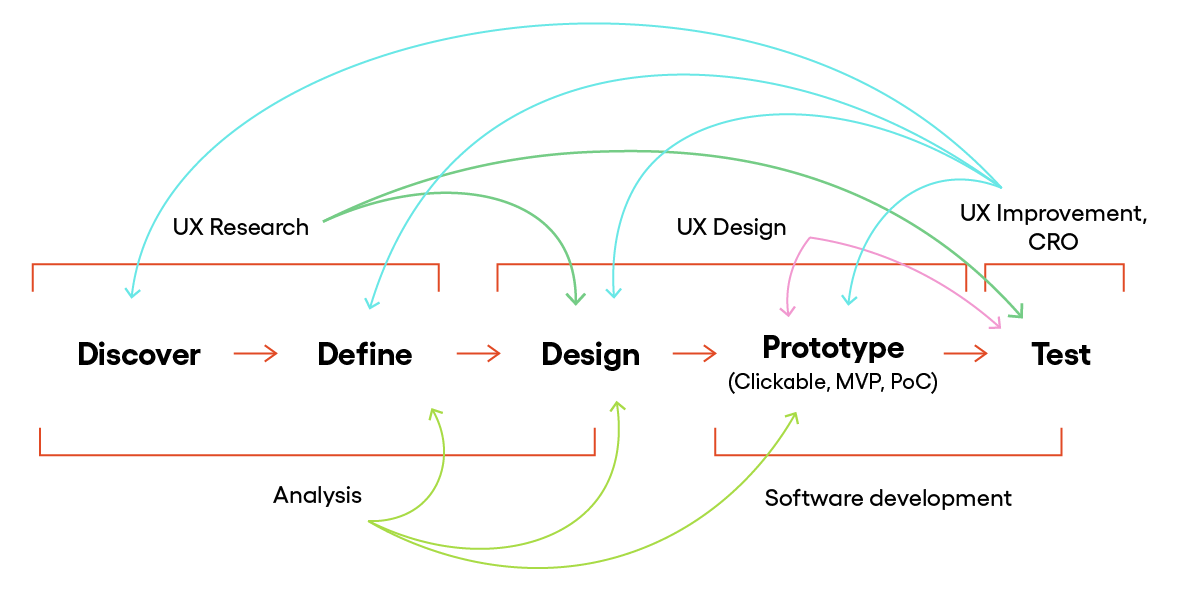 So… where to start?
So… where to start?
Phase #1: DISCOVERY
Phase one is the time to learn more about your users, map the market, the relevant niche and competing solutions, and analyse expectations of business clients. At the beginning of the conceptual work at SPEEDNET during the design workshops, we define activities and resources, which are essential to realize a project (Scoping Session). Afterward, if it’s necessary, we make qualitative and quantitative research and additional analysis. Thanks to that activities we may learn more about our users – discover their real needs, typical environments and everyday challenges. During these processes we collect crucial data about potential users and out=r business client.
Phase #2: DEFINE & CREATE
The previous phase is the data input time for the project. The next step is output. During this phase we are using collected data to define precise problems, as well as:
– what value is carried by the product we are creating – Value Proposition,
– what tools and features will be necessary to solve the chosen problem,
– what resources we will need to fulfil the project.
Phase #3: IDEATE & DESIGN
In SPEEDNET during this stage we create a step-by-step strategy and verify our solutions using SWOT analysis, Value Proposition and previous drafts. After that we are checking what, how and why of our project. This knowledge will give us correct perception and wider view.
We already know assumptions of the project, so we can move on to designing the finished process for satisfying user needs, user experience and how to solve the final users’ problems. This is a good time to first verify the design assumptions during the implementation of the software’s core functions.
Phase #4: PROTOTYPE & DEVELOPMENT
In phase four, we already have the project’s assumptions precisely defined, the tech-stack, as well as an implementation plan that is clear and understandable to all team members. We know what the SPEEDNET client wants and what the target group of their business wants. Finally, we can move forward with prototyping and coding to confront the pre-created solution with potential customers.
Phase #5: TEST: validation, optimization and improvements
We can turn feedback from first-time users into ready-made fixes and improvements to be coded. We simplify overly complicated conversion paths and actions inside the application. We remove features that are redundant and add those that users miss.
4 mistakes in the Product Design process
Can anything go wrong? Of course. What mistakes should you avoid?
- Communication within the design team and between the software house and the client: if someone doesn’t know about something, it can certainly explode. At the least expected moment.
- Implementation of the brief without any reflections: a brief that reliably describes the order? That’s practically impossible. There is so much new information, suggestions, corrections and additional features at the development stage that assumptions from the brief can become outdated after the first product workshop.
- The imbalance between technical and business approaches to a digital product: there are plenty of brilliant programmers who can code. There are also plenty of entrepreneurs who can develop their businesses. To combine all the goals, knowledge, ideas and skills, a product designer who has a good understanding of the final recipient of, for example, a web application or software, is essential.
- Deficits in testing: an inadequate or too small test group, verifying multiple hypotheses at the same time, or testing a product at the wrong point in the process can destroy many hours of work for the entire team.
SPEEDNET’s Product Design Process: summary
Only these 5 stages of digital product design ensure us maximum efficiency with the planned budget. And above all, the success of the project strictly “tailored” to the needs of the final users, as well as the client’s vision and capabilities. This procces means that the client may come to SPEEDNET during any of these stages (e.g., after resigning from an unsuccessful collaboration with another software house), and we know immediately what to do.
The grande finale? Brief more than fulfilled. Satisfied end-users. Programmers and designers too. The client feels that his new IT solution has realistically changed his business. The product designer bundled everything together and avoided key mistakes. Everything comes together. Safe, risk-free, on time and of the highest quality.
Sounds like a plan? So, if you’re looking for an IT project team for your digital product, write to us here.


